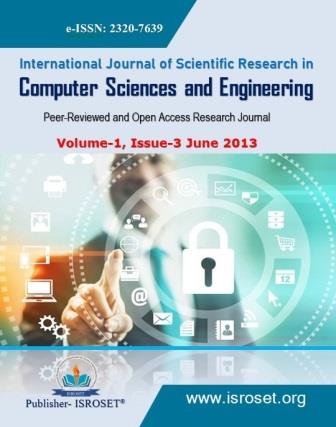Emphasis on Genetic Algorithm (GA) Over Different PID Tuning Methods of Controlling Servo System Using MATLAB
Keywords:
PID Tuning, PID Controller, Genetic Algorithm, MATLAB, Servo SystemAbstract
This paper describes Genetic Algorithm, which maintains the accuracy of the output of a system. Here we discuss about the control method of Genetic Algorithm tool on a Servo System. Our objective is to deduce the best tuning method among Genetic algorithm and other conventional tuning methods. The paper presents details on the algorithm and implementation, including the major components in our design: recombination, mutation, fitness function. The algorithm was implemented with Genetic Algorithm tool in MATLAB R2010 for performance evaluation. The simulation showed that the algorithm helped the output to be superior over all the other conventional methods of tuning. First of all the actual response of a “servo-system” is evaluated and the time domain specifications are noted. Thereafter, the specifications with variations of parameters are compared with original system values after the system is tuned by Zeigler-Nichols and Tyreus-Luben method. A greater improvement is observed with the tuning method of Genetic Algorithm.
References
Bindu.R, Mini.K.Namboothiripad “Tuning Of PID Controller For DC Servo Motor Using Genetic Algorithm” International journal of emerging technology and advanced engineering, ISSN 2250-2459, vol 2, issue 3, March 2012.
R. Matousek, P. Minar, S. Lang and P. Pivonka, “Efficient Method In Optimal PID Tuning” Proceedings of the World Congress on Engineering and Computer Science, vol 1,WCECS, San Francisco,USA, October,2011.
Rahul Malhotra, Yaduvir Singh, Narinder Singh, “Genetic Algorithms:Concepts, Design for Optimazation of Process Controllers”, Computer and Infornation science, vol.4, no.2, March 2011.
R. C. Chakraborty, “Fundamentals of Genetic Algorithm” , AI course lecture 39-40, notes, slides; e-mail: rcchak@gmail.com ; June 2010
J.Roupec, J:, “Advanced Genetic Algorithms for Engineering Design Problems”, Engineering Machines , vol.17, no 5/6, 2010
Vladimir Bobal, Petr Chalupa, Marek Kubalcık Petr Dostal “Self Tuning Predictive Control On Non-Linear Servo Motor” , journal of Electrical Engineering, vol.61, no. 6, 365-372, 2010.
Neenu Thomas, Dr.P.Poongodi “Position Control Of DC Motor Using Genetic-Algorithm Based PID Controller” Proceedings of The Wrold Congress on engineering, vol.2,WCS 2009, July 2009
Sigurd Skogestad “Probably the Best Simple PID Tuning Rules in the World” journal of process control, july,2001
MATLAB the mathematical toolbox version 7.6.0.324(R2010a), the product of math work. http://www.mathwork.com/product.
Dr. Sushil Dasgupta “Control System Theory”, Khanna Publishers, Delhi 6, 1983.
I. J. Nagrath and M. Gopal “Control System Engineering”, New Age International Publishers, New Delhi, Fifth Edition, 2011.
M. Cech and M. Schlegel “ Computing PID Tuning Regions Based on Fractional-Order Model Set”, IFAC conference on advances in PID control, March, 2012
Chuck Lewin, CEO of Performance Motion Devices , 55, Old Bedford Road, Lincoln, MA 01773; e-mail: info@pmdcorp.com ; 2007.
M. M. Kanai, J. N. Nderu, P. K. Hinga, “Adaptive PID Dc Motor Speed Controller With Parameters Optimized with Hybrid optimization Strategy”, 2nd International conference on Advances in Engineering and Technology , 2011
Downloads
Published
How to Cite
Issue
Section
License

This work is licensed under a Creative Commons Attribution 4.0 International License.
Authors contributing to this journal agree to publish their articles under the Creative Commons Attribution 4.0 International License, allowing third parties to share their work (copy, distribute, transmit) and to adapt it, under the condition that the authors are given credit and that in the event of reuse or distribution, the terms of this license are made clear.







